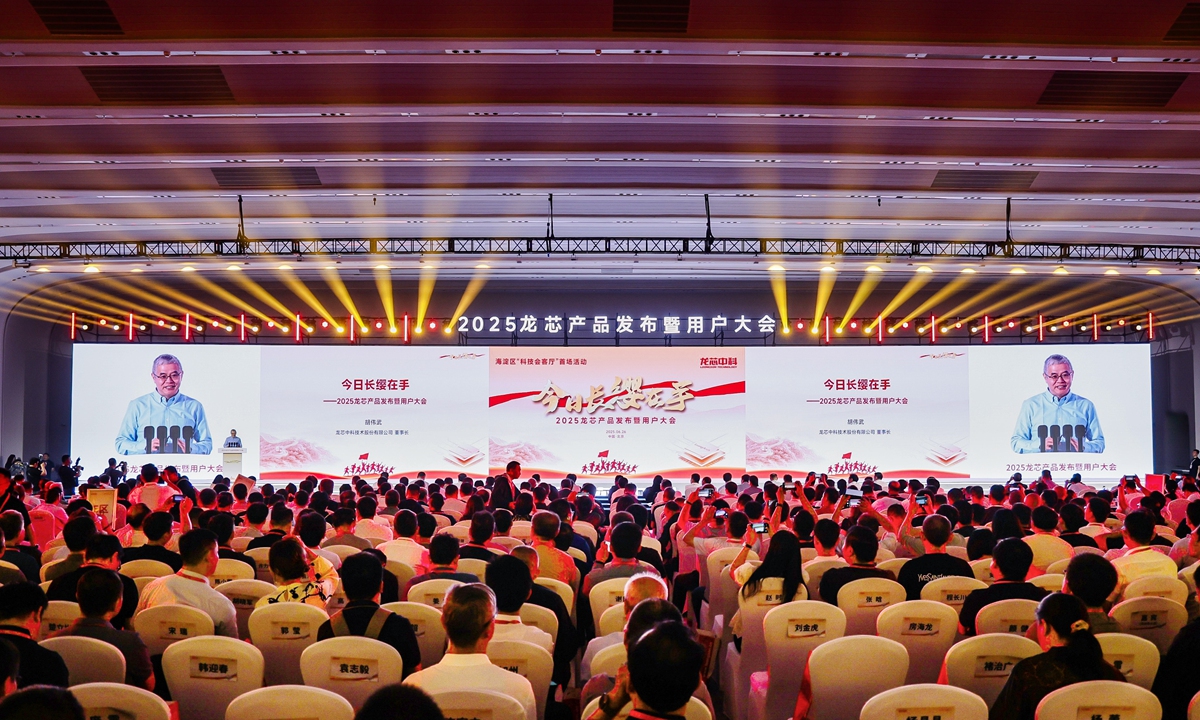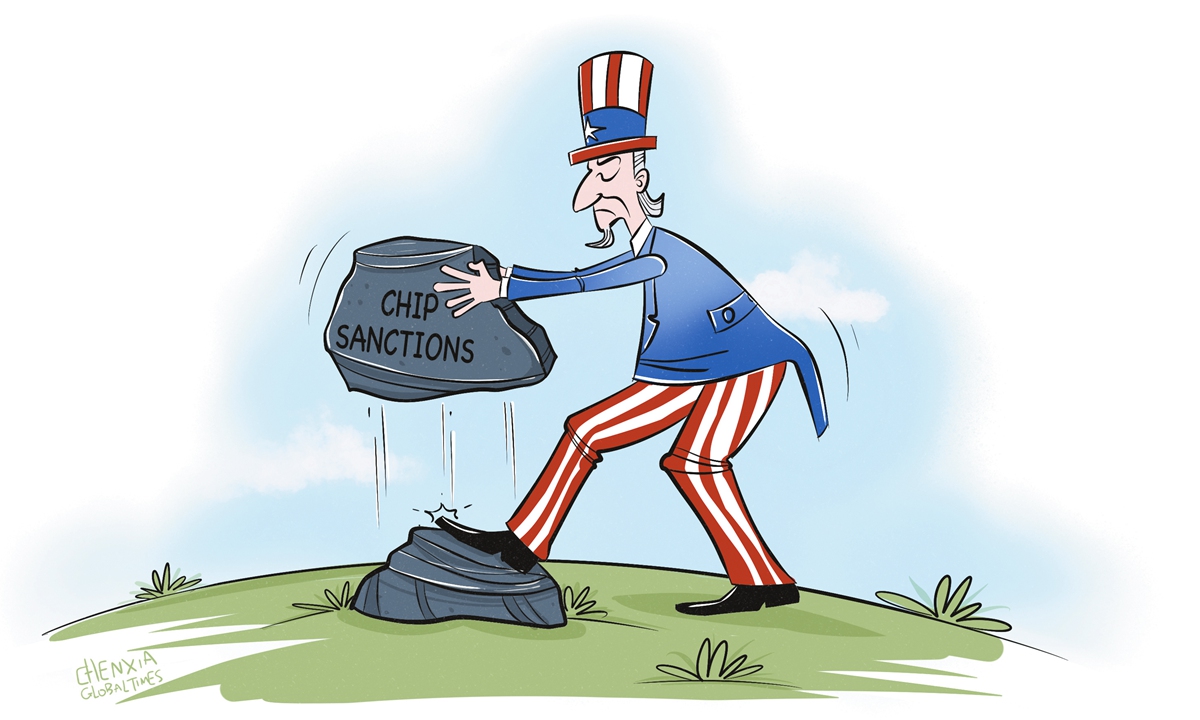Major EDA suppliers confirm US lifts chip design software curbs on China; a positive sign of advancing framework for implementing Geneva trade talks consensus: analysts

chip Photo:VCG
US electronic design automation (EDA) supplier Synopsys said it had been informed by the US Department of Commerce that the export restrictions related to China, pursuant to a letter received on May 29, 2025, have now been rescinded effective immediately, according to a statement sent to the Global Times on Thursday.
"Synopsys is working to restore access to the recently restricted products in China," the company said in the statement.
German EDA provider Siemens was recently notified by the Bureau of Industry and Security, US Department of Commerce, that the export control restrictions on EDA software and technology to customers in China set forth in the May 23 letter received by Siemens are no longer in place, according to a statement that Siemens China sent to the Global Times on Thursday.
As a result, Siemens has restored full access to software and technology classified under Export Control Classification Numbers (ECCNs) 3D991 and 3E991, subject to applicable export control laws and regulations, and we have resumed sales and support to Chinese customers, read the statement.
We appreciate the patience of our customers as we have navigated the rapidly changing global trade landscape and understand the inconvenience this may have caused, said Siemens.
Another world-leading chip design software provider - Cadence Design Systems Inc - said that the US had lifted export restrictions on chip design software for China and that it was in the process of restoring access to software and technology to affected customers, Reuters reported.
The US imposed restrictions on EDA tools exported to China in May.
EDA tools are essential for designing advanced semiconductors. EDA refers to the use of computer-aided design software to complete processes such as functional design, synthesis, verification, and physical design of chips. It encompasses all technologies involved in electronic design, simulation, verification, and manufacturing. As the most upstream part of the industry, EDA software is often hailed as the "mother of chips," the Xinhua News Agency reported in April.
Synopsys, Cadence and Siemens together control more than 70 percent of China's EDA market, according to Xinhua.
In a separate move, according to a Reuters report on Thursday, the US cleared the way for ethane exports to China by rescinding license requirements for producers Enterprise Products Partners and Energy Transfer, as well as ethane traders Satellite Chemical USA and Vinmar International. The move, made on Wednesday, was described by Reuters as "a sign that the US-China trade truce was on track."
At least eight vessels were headed to China on Wednesday, after they had stalled along the US Gulf Coast in June due to the curbs, according to Reuters.
On Friday, a spokesperson for the Chinese Ministry of Commerce (MOFCOM) said that China will accelerate its rare-earth export approval process regarding shipments to the US in accordance with the law, and the US will remove a series of restrictive measures imposed on China accordingly.
The Chinese and US economic and trade teams recently further confirmed the details of the framework for implementing the Geneva trade talks consensus, the MOFCOM spokesperson said.
According to Bloomberg, under a trade agreement finalized last week, the US promised to allow shipments of chip-design software, ethane and jet engines to China.
"Following the framework agreement reached between China and the US, and the consensus reached in London, these actions can be interpreted as the US beginning to fulfill some of its commitments," Zhou Mi, a senior researcher at the Chinese Academy of International Trade and Economic Cooperation, told the Global Times on Thursday.
Notably, these restrictions on chip design software were imposed after the bilateral high-level talks in Geneva in April. The MOFCOM has repeatedly expressed concerns with the US regarding its abuse of export control measures in the semiconductor sector and other related practices.
"The recent lifting of export restrictions is a positive signal of mutual cooperation between China and the US, helping to ease market concerns and reduce fears of reciprocal sanctions and suppression," said Zhou, adding that these restrictive measures are additional constraints introduced by the US following the imposition of tariffs.
Shares of Synopsys and Cadence both rose about 6 percent in pre-market trading, while Siemens gained around 1 percent on the German market as of 5:00 pm, according to data from Investing.com showed.
This move sends a certain positive signal, indicating that China and the US are gradually advancing the framework for implementation of the Geneva trade talks consensus after the economic and trade talks held in London, Gao Lingyun, a research fellow at the Institute of World Economics and Politics of the Chinese Academy of Social Sciences, told the Global Times on Thursday.
This progress has been achieved through China's resolute struggle, and the US has also realized that unilateral actions are untenable and that cooperation with China is necessary, said Gao.
"I hope the US will not limit itself to these measures of lifting export restrictions but will work further with China to ease remaining restrictions on China-US economic and trade cooperation, expanding mutually beneficial two-way collaboration. This is crucial for both sides, particularly for the stability of the US economy," Zhou noted.
Gao also warned that since the implementation of US tariffs, its domestic production costs have risen, and these costs have been passed on to consumers, negatively affecting its own economy.
"Globally, if the US persists in wielding the tariff stick after July 9 deadline which marks the expiration of a 90-day pause for most countries, it will further disrupt international investment and supply chains, increasing uncertainty in the global trade environment," Gao noted.
For example, Washington's implementation of full universal tariffs announced on April 2 could add up to $187.7 billion in direct import costs for medium-sized firms - more than six times the cost of earlier tariffs in place at the start of 2025, according to a report by JP MorganChase released on Wednesday.
Meanwhile, some pain in industries emerged after the US imposed export restrictions on China.
About half of all US exports of ethane, which is extracted from US shale gas and primarily used as a petrochemical feedstock, head to China, and a halt in shipments was set to hurt US producers as well as Chinese petrochemical manufacturers, according to Reuters.



